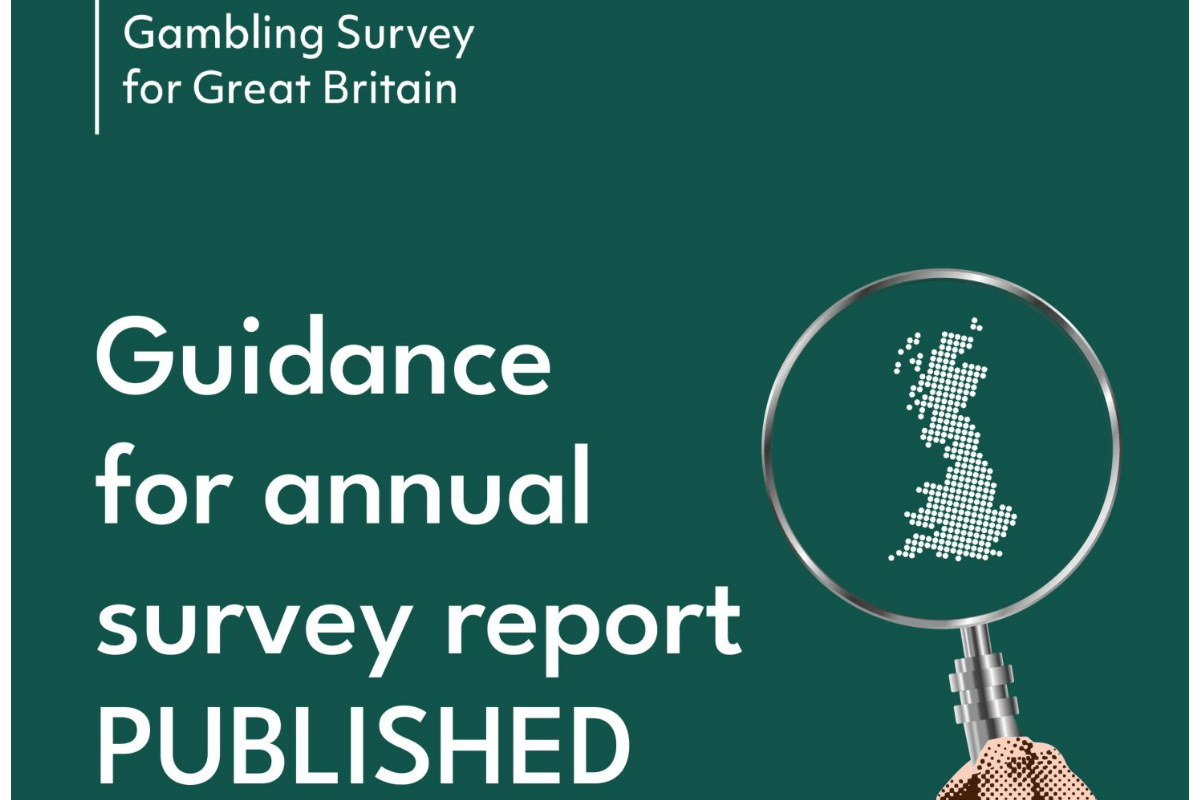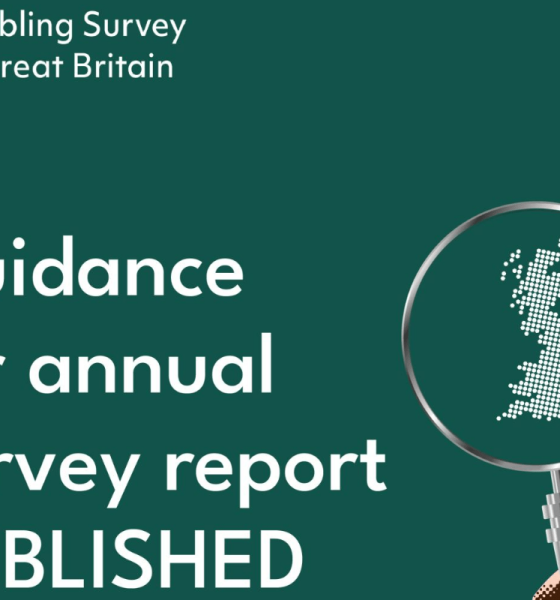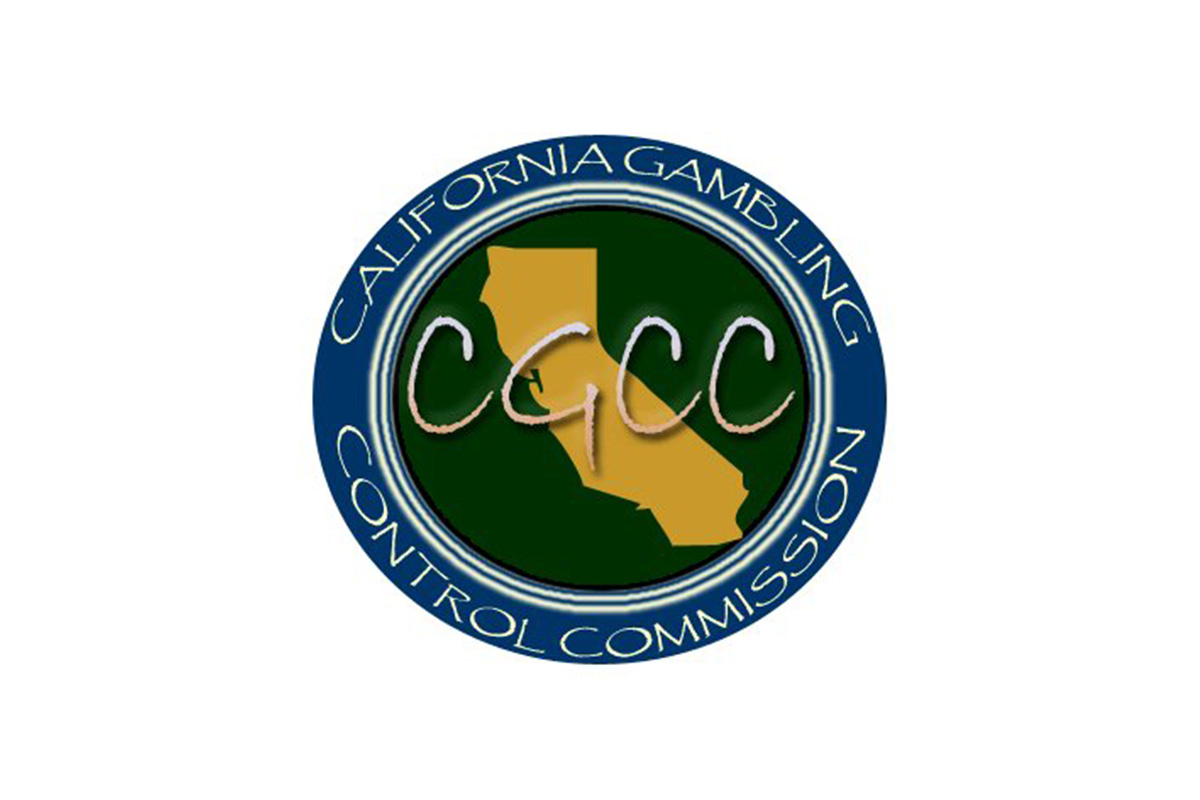

Compliance Updates
Guidance on using statistics from the Gambling Survey for Great Britain
The guidance set out here is designed to help anyone who wishes to use data from the Gambling Survey for Great Britain (GSGB) to ensure it is reported correctly, this could include policy makers, academics, the gambling industry, the media, members of the public and any other interested users. It is produced in accordance with the Code of Practice for Statistics, Value 3.4 Clarity and Insight.
We have published this guidance because the official statistics from the GSGB are new and they are collected using a different methodology than previous official statistics. The guidance takes on board the recommendations from Professor Sturgis’s independent review of the GSGB and his analysis of the impact of the change in methodology.
We are aware that official statistics on gambling have previously been used in ways that they were not intended and, in some cases, the data was misused. Therefore it is important that users understand how the new official statistics from the GSGB can be used, what they should not be used for and where some caution should be applied. There are slightly different approaches for statistics relating to gambling participation and the consequences of gambling because of the smaller base sizes and greater margins of error for the statistics relating to the consequences of gambling.
Gambling participation
The GSGB can be used:
- to look at patterns within the data amongst different demographic groups
- to assess future trends and changes in gambling participation, measuring changes against the 2024 baseline
- to compare patterns in gambling participation for England, Scotland and Wales and regionally where sample sizes allow.
The GSGB can be used with some caution (until further work is completed):
- to provide estimates of gambling participation amongst adults (aged 18 and over) in Great Britain
- to gross up gambling participation estimates for the whole population.
The GSGB should not be used to provide direct comparisons with results from prior gambling or health surveys.
Consequences of gambling
The GSGB can be used:
- to look at patterns within the data amongst different demographic groups
- to assess future trends and changes in consequences of gambling, measuring changes against the 2024 baseline
- to compare patterns in consequences of gambling for England, Scotland and Wales and regionally where sample sizes allow
- to describe the range of consequences that someone may experience as a result of someone’s own gambling and as a result of someone else’s gambling.
The GSGB can be used with some caution (until further work is completed):
- to provide estimates of Problem Gambling Severity Index (PGSI) scores amongst adults (aged 18 and over) in Great Britain
- to provide estimates of the prevalence of consequences of gambling amongst adults (aged 18 and over) in Great Britain.
The GSGB should not be used:
- to provide direct comparisons with results from prior gambling or health surveys
- as a measure of addiction to gambling
- to calculate an overall rate of gambling-related harm in Great Britain
- to gross up the prevalence of problem gambling or the consequences of gambling to whole population (until further work is completed).
Comparability with previous surveys
Direct comparisons between the GSGB and previous surveys should not be used to assess trends over time
Due to differences in the way data for the GSGB is collected in comparison to prior gambling or health surveys, the GSGB is not directly comparable with results from previous surveys and direct comparisons should not be used to assess trends over time.
That said, some limited comparisons are useful to assess differences between study methodologies. All surveys are subject to a range of potential biases which may affect results. The GSGB, the prior health surveys and gambling surveys are no different.
The changes that have been made to the GSGB are outlined in the following table and include:
- collection mode
- questionnaire content
- age coverage.
| Factor | Gambling Survey for Great Britain | Health Survey for England (HSE) | Quarterly Telephone Survey |
|---|---|---|---|
| Collection mode | Self completion: Push-to-web survey with paper-based alternative | Interviewer led with self completion elements: Face-to-face (gambling questions asked in a self completion module but with interviewer and other household members present) | Interviewer led: Telephone |
| Questionnaire content | Gambling | Health | Gambling |
| Age coverage | Adults aged 18 and over | Adults aged 16 and over | Adults aged 16 and over |
| Sample size | 10,000 (Year 1) 20,000 (Year 2 onwards) |
7,100 (HSE 2018) | 4,000 per annum |
| Response rate | 19% (Year 1) | 59% (HSE 2018) 36% (HSE 2022) |
Data currently unavailable |
| Geographic breakdown | England, Wales and Scotland | England | England, Wales and Scotland |
The annual GSGB report will be published 25 July 2024 and will represent the first year of a new baseline, against which future annual data from the GSGB can be compared. Smaller and more frequent publications will be available on a quarterly basis based on the data collected in the previous wave only. These ‘wave specific’ publications can be used to compare wave on wave trends throughout the year.
Impact of new methodology
There is a risk that the GSGB may overstate some gambling behaviours and therefore estimates should be used with some caution.
Further investigation of the possible reasons for this is needed to better quantify the scale and direction of impact upon the GSGB estimates and until this is completed, the statistics relating to the prevalence of problem gambling or the consequences of gambling should not be grossed up to whole population.
Whilst the move to a push-to-web survey was endorsed by Professor Patrick Sturgis in his independent review of the GSGB methodological approach and will enable to better detection and understanding of patterns and trends in gambling behaviour, he also urges due caution with the new statistics, “being mindful of the fact that there is a non-negligible risk that they substantially over state the true level of gambling and gambling harm in the population”.
There are several potential reasons for this increase in PGSI estimates as outlined by Sturgis in his review. This may relate to the lower response rates that the push-to-web design achieves. People who gamble, and those who gamble more heavily, may be more likely to complete the GSGB than those who do not gamble. As PSGI scores are higher for those with more gambling engagement, a lower response rate, potentially over representing those who gamble, would serve to increase reported PGSI scores.
Alternatively, prior surveys may have under-estimated PGSI scores and/or underestimated online gambling behaviours as a result of socially desirable responding. Sturgis noted that “there [were] good grounds to suggest the presence of an interviewer (as used by the [British Gambling Prevalence Survey (BGPS)] BGPS and [Health Survey] HS series) induces a downward bias on estimates of the prevalence of gambling harm”.
It may also be that PGSI scores have actually increased in the population over time. Online gambling is strongly associated with elevated PGSI scores and gross gambling yield from online gambling has increased substantially since 2018. These changes in the gambling market could affect the PSGI scores estimated in the survey. All these things could be true, either alone or in combination.
In summary, as Sturgis notes, the two studies which have investigated possible factors for these changes in estimates were unable to come to a definitive estimate about the magnitude of the errors, and therefore uncertainty remains around which estimates (the GSGB or prior studies) are closer to the truth. Further investigation of the possible reasons for this is needed to better quantify the scale and direction of impact upon the GSGB estimates and until this is completed, the statistics relating to the prevalence of problem gambling or the consequences of gambling should not be grossed up to whole population.
Be careful reporting base numbers
Correctly reference whether statistics are based on all participants, or whether they are a subset of all participants such as people who have gambled in the last 12 months or participants who completed the online version of the survey.
The GSGB asks a range of questions some of which are applicable to all participants and some which are only applicable to people who have gambled.
Care should be taken when reporting statistics, particularly those relating to the PGSI to make sure you are correctly stating if the results are based on the views of all participants, or if they are based on people who have gambled. This is an area where we have previously seen misreporting.
This distinction is important as the first group includes people who have not gambled on any activity in the past year whereas the second group is based only on people who have gambled in the 12 months. In the report we have also included a third group which excludes people who have only taken part in lottery draws. This is because lotteries are so much more popular than any other form of gambling, so it can mask patterns of what’s going on with other types of gambling. For this reason, in the report we sometimes present findings excluding the people who have only taken part in a lottery draw and not taken part in any other type of gambling.
Through our stakeholder engagement we know that stakeholders are interested in multiple ways of presenting the data, for example at a population level including people who do not gamble and based on people who have gambled.
It is also worth noting that new questions in the GSGB about the wider consequences of gambling are all presented as a proportion of participants who have gambled in the past 12 months or as a proportion of participants who know someone close to them who gambles, so should be reported in this way. This is an example of how you should report the data:
“Of those who know someone close to them who gambles, x percent had experienced relationship breakdown because of someone else’s gambling.”
To ensure we can include all of the relevant content within the GSGB, core questions are asked on both the online and paper version of the survey whereas some topical or modular questions are only asked on the online version of the survey. The Commission will clearly label any statistics which are based on online responses only, and users should do the same.
Survey estimates
All surveys produce estimates rather than precise figures, users should be aware of confidence intervals.
The GSGB, in common with other surveys, collects information from a sample of the population. Consequently, statistics based on the survey are estimates, rather than precise figures, and are subject to a margin of error, also known as a 95 percent confidence interval. It would be expected that the true value of the statistic in the population would be within the range given by the 95 percent confidence interval in 95 cases out of 100. Confidence intervals are affected by the size of the sample on which the estimate is based. Generally, the larger the sample, the smaller the confidence interval, which results in a more precise estimate.
Confidence intervals should be taken into consideration by users, this is particularly true for PGSI estimates where base sizes can be small. We have provided confidence intervals for PGSI estimates within the data tables. Where differences are commented on in the annual report, these reflect the same degree of certainty that these differences are real, and not just within the margins of sampling error. These differences can be described as statistically significant.
Annual versus wave specific data
In a typical year there will be four wave specific publications from the GSGB plus an annual publication. Where possible, the annual data should be used as the priority with wave specific data being used when you want to look at patterns of gambling participation within a year, or where modular questions have only been asked in certain waves.
The GSGB collects data continuously throughout the year. Survey data will be available:
- on a quarterly basis via wave specific publications
- annually where data for the calendar year will be combined to provide a more detailed breakdown.
Annual datasets will be published to UK Data Service (opens new tab).
We recommend using annual data as the default as this will be based on a large sample size (10,000 in Year 1 and 20,000 from Year 2 onwards) and will allow for more analysis at sub population level. This is also how we will track trends over time. Annual publications will include findings on the consequences of gambling.
Wave specific data should be used if you need data for a specific time period, and to track trends or patterns within a calendar year. These publications will focus predominately on participation in gambling in that time period.
Language
Use a person centric approach when reporting statistics about gambling.
Do not stigmatise or victimise those people experiencing adverse consequences from gambling.
Do not describe PGSI as a measure of gambling addiction.
The language we use matters. People who gamble are defined by more than their actions when they gamble. That is why we recommend a “person-centric” or “person first” approach. Whilst taking this new approach may use more words, it is important in lowering stigma and barriers to people seeking help for gambling addiction.
For example, instead of writing “x percent of gamblers…”, you can write “x percent of people who gamble…”.
The Problem Gambling Severity Index (PGSI) consists of nine questions which measure both behavioural symptoms of gambling disorder and certain adverse consequences from gambling. The PGSI should not be confused with a measure of gambling addiction. More information on how the PGSI is measured can be found here.
Wider evidence base
The GSGB is one source of data in the Commission’s wider evidence base.
The Gambling Commission uses a range of data, research and insights to inform the decisions that we make and provide advice to the Government about gambling behaviour and the gambling market. To be the most effective regulator possible, we require a robust evidence base. The GSGB forms one source of evidence for our evidence base and should be considered alongside a wealth of other evidence and information which we use to fill our evidence gaps and priorities 2023 to 2026.
If statistics are used incorrectly
We encourage people to use our statistics to support understanding of important issues related to gambling.
We expect that anyone using our official statistics should present the data accurately and in accordance with the guidelines presented here. This includes ensuring that the data is not taken out of context, manipulated, or presented in a way that could materially mislead others.
The post Guidance on using statistics from the Gambling Survey for Great Britain appeared first on European Gaming Industry News.
Compliance Updates
Ukraine’s PlayCity Begins Issuing Licenses to Gambling Operators

The Cabinet of Ministers of Ukraine has adopted a resolution on licensing conditions in the gambling sector, which allows the state agency PlayCity to begin issuing licenses to gambling organisers and confirming previously issued ones.
“As a result, this will generate almost UAH 50 million (1.028.956,00 Euro) in additional revenues to the state budget from license fees in the near future,” PlayCity reported on Telegram.
It is noted that to obtain a license, impeccable business reputation, lack of ties with the aggressor state and implementation of all necessary mechanisms for responsible gaming are required.
PlayCity clarified that such requirements apply to both those who are only applying for a license and current licensees. Current licensees have two months to submit documents to PlayCity on compliance with the requirements.
The message emphasises that if the requirements are not met, sanctions in the form of fines or termination of the license may be applied to the organisers of gambling.
“The state will direct additional budget revenues to strengthen defense capabilities, in particular, to purchase drones for the Defense Forces,” PlayCity added.
The post Ukraine’s PlayCity Begins Issuing Licenses to Gambling Operators appeared first on European Gaming Industry News.
Compliance Updates
Football Season Kicks Off: Arizona Department of Gaming Warns of Gambling Scams and Highlights Consumer Protection Tools

September is Responsible Gaming Education Month, and the Department is reminding fans to play it safe with tools like Check Your Bet, self-exclusion, and the 1-800-NEXT-STEP helpline.
With the football season underway, the Arizona Department of Gaming (“the Department”) is warning Arizonans about the growing risks of unlicensed online casinos and sportsbooks. September also marks Responsible Gaming Education Month, making this an important time to remind fans that if you choose to play, play it safe by choosing a regulated operator.
Regulated gaming offers important consumer protections, helping ensure fair play, data security, accountability, and a safer overall experience. The Department has seen an increase in consumer complaints about unlicensed gambling operations in recent months, a trend expected to intensify as football season kicks off and the busiest event wagering period of the year begins. Common issues include unfair or misleading terms, difficulty withdrawing winnings, and accounts being frozen without explanation, often after a withdrawal request.
“Responsible Gaming Education Month is the perfect time to remind Arizonans that while legal, regulated gaming options are available to all Arizonans ages 21+, there are also deceptive operators eager to take advantage of fans during football season,” said Jackie Johnson, Director of the Arizona Department of Gaming. “Unregulated platforms lack responsible gaming safeguards, age verification, and offer no consumer protections, which puts Arizonans at risk. That’s why the Department is promoting resources to give every Arizonan the tools they need to make informed choices and play responsibly.”
To help protect Arizonans, the Department has launched a new Responsible Gaming website and is spotlighting three key resources this month:
- Check Your Bet– If you choose to participate in gaming, opting for legal, regulated operators is the best way to protect yourself. Playing responsibly means knowing your operator is licensed and that you meet Arizona’s legal gaming age of 21+. This online resource helps Arizonans confirm they’re using a legal site, which helps protect against fraud, identity theft, and other risks.
- Self-Exclusion Program– A free, confidential program that allows people to voluntarily limit their access to Arizona’s regulated gaming. The statewide self-exclusion program was established in 2004 for casinos and expanded in 2021 to include retail sportsbooks, event wagering platforms, and fantasy sports platforms. More than 550 Arizonans enrolled in the last fiscal year, and over 11,000 have chosen this option since the program began.
- 1-800-NEXT-STEP – A confidential, 24/7 helpline for anyone seeking support right now, whether for themselves or someone they care about. The helpline connects Arizonans with caring professionals who can provide immediate assistance, low and no-cost treatment referrals, and financial counseling.
These resources, along with more tips and tools, are available at the Department’s new webpage: gaming.az.gov/ResponsibleGaming.
Top 5 Signs of an Unlicensed Gambling Site
The Department urges Arizonans to be cautious and watch for these warning signs that a site or app may be fraudulent or unlicensed:
- No Responsible Gaming Protections – Licensed operators are required to provide responsible gaming tools, including age verification to ensure no one under the age of 21 can play, deposit limits, time limits, self-exclusion options, and access to the 1-800-NEXT-STEP helpline. If you don’t see these tools, it’s a red flag.
- Too-Good-to-Be-True Offers – Promises of “guaranteed wins,” oversized bonuses, or “risk-free” bets are common scam tactics.
- Trouble Getting Paid and No Dispute Resolution – Unregulated sites often delay or deny withdrawals, with little to no process for resolving disputes.
- Unusual Payment Methods – Sites that only accept cryptocurrency, wire transfers, or gift cards instead of secure, standard payment options are a major warning sign.
- Copycat Branding or Poor Site Quality – Some fraudulent sites impersonate legitimate Arizona casinos or sportsbooks, using misspellings, broken links, or look-alike names to trick players into downloading their app or visiting their site.
“Licensed operators in Arizona are required to provide responsible gaming safeguards. When people play on unregulated sites, those protections are missing and people are more vulnerable,” said Elise Mikkelson, Director of the Division of Problem Gambling. “That’s why Arizona’s helpline exists: to ensure every Arizonan has access to the support they need. With more than 11,000 Arizonans choosing to enroll in the state’s self-exclusion program since it began, it’s clear that no one is alone in taking steps to protect themselves. And if you or someone you know is struggling, help is always available.”
How to Report Suspicious Gambling Activity, Fraud, or Identity Theft:
Arizonans who believe they may have encountered an unlicensed or suspicious gambling site are encouraged to report it directly to the Arizona Department of Gaming. Reports help the Department investigate and take action to protect consumers statewide. If you find a website, app, or business that claims to offer legal gaming in Arizona but does not appear to be licensed or authorized by the Department, follow these steps:
- Document the website URL, app, business name, and any promotional materialsassociated with the platform or operator.
- Report itto ADG at [email protected] and the Arizona Attorney General’s Office Consumer Information and Complaints Unit at (602) 542-5763 or by visiting azag.gov/consumer.
- Cease activity on the platform and monitor financial accounts for unauthorized transactions.
- If you suspect identity theft, report it to the Federal Trade Commission (“FTC”): for help in English, go to IdentityTheft.gov, and for help in Spanish, go to RobodeIdentidad.gov.
The Department takes complaints about all illegal gambling seriously. Reports can be made anonymously.
The post Football Season Kicks Off: Arizona Department of Gaming Warns of Gambling Scams and Highlights Consumer Protection Tools appeared first on Gaming and Gambling Industry in the Americas.
California
California Gambling Control Commission Issues New Precedential Decision on Licensing Requirements

The California Gambling Control Commission has issued a new Precedential Decision that addresses licensure requirements for funding sources of Third-Party Providers of Proposition Player Services (TPPPS).
The decision, formally titled Precedential Decision 2025-01, was adopted on August 21, 2025, and is now available on the Commission’s Precedential Decisions page
along with all prior precedential rulings.
This latest decision provides further clarity on licensing obligations and regulatory expectations for individuals and entities involved in funding TPPPS operations—a key aspect of maintaining integrity and oversight in California’s regulated gambling industry.
Stakeholders and members of the public can stay informed by subscribing to receive notifications when new Precedential Decisions are under consideration or adopted. The Precedential Decisions Subscription Signup Form, along with other subscription options for Commission meeting agendas, newsletters, and rulemaking updates, is available on the Commission’s website.
For questions or additional information, contact the Commission at (916) 263-0700 or via email at [email protected]
.
The post California Gambling Control Commission Issues New Precedential Decision on Licensing Requirements appeared first on Gaming and Gambling Industry in the Americas.
-

 gaming3 years ago
gaming3 years agoODIN by 4Players: Immersive, state-of-the-art in-game audio launches into the next generation of gaming
-
EEG iGaming Directory9 years ago
iSoftBet continues to grow with new release Forest Mania
-
News8 years ago
Softbroke collaborates with Asia Live Tech for the expansion of the service line in the igaming market
-
News7 years ago
Super Bowl LIII: NFL Fans Can Bet on the #1 Sportsbook Review Site Betting-Super-Bowl.com, Providing Free Unbiased and Trusted News, Picks and Predictions
-
iGaming Industry8 years ago
Rick Meitzler appointed to the Indian Gaming Magazine Advisory Board for 2018
-
News7 years ago
REVEALED: Top eSports players set to earn $3.2 million in 2019
-
iGaming Industry8 years ago
French Senator raises Loot Boxes to France’s Gambling Regulator
-
News7 years ago
Exclusive Interview with Miklos Handa (Founder of the email marketing solutions, “MailMike.net”), speaker at Vienna International Gaming Expo 2018













